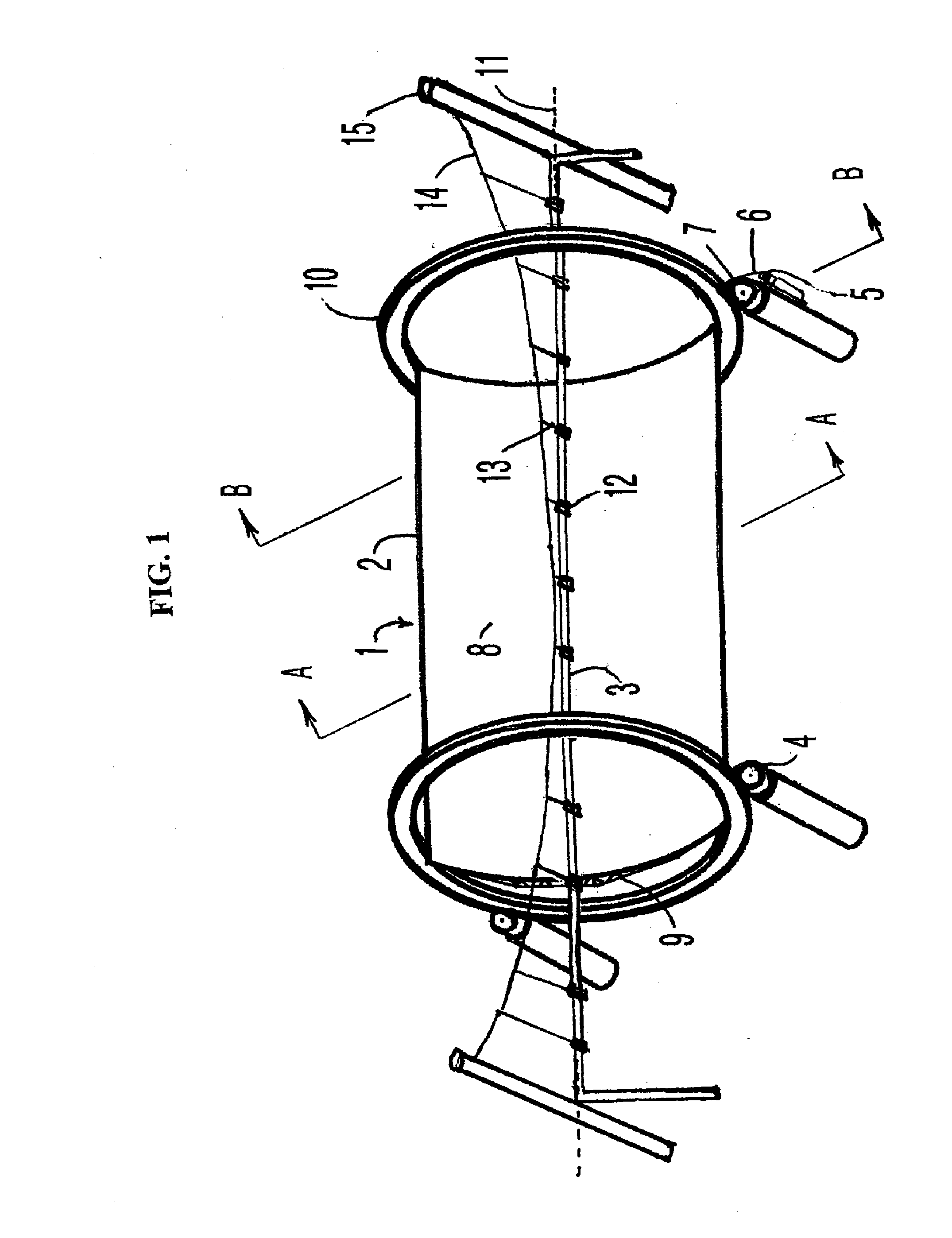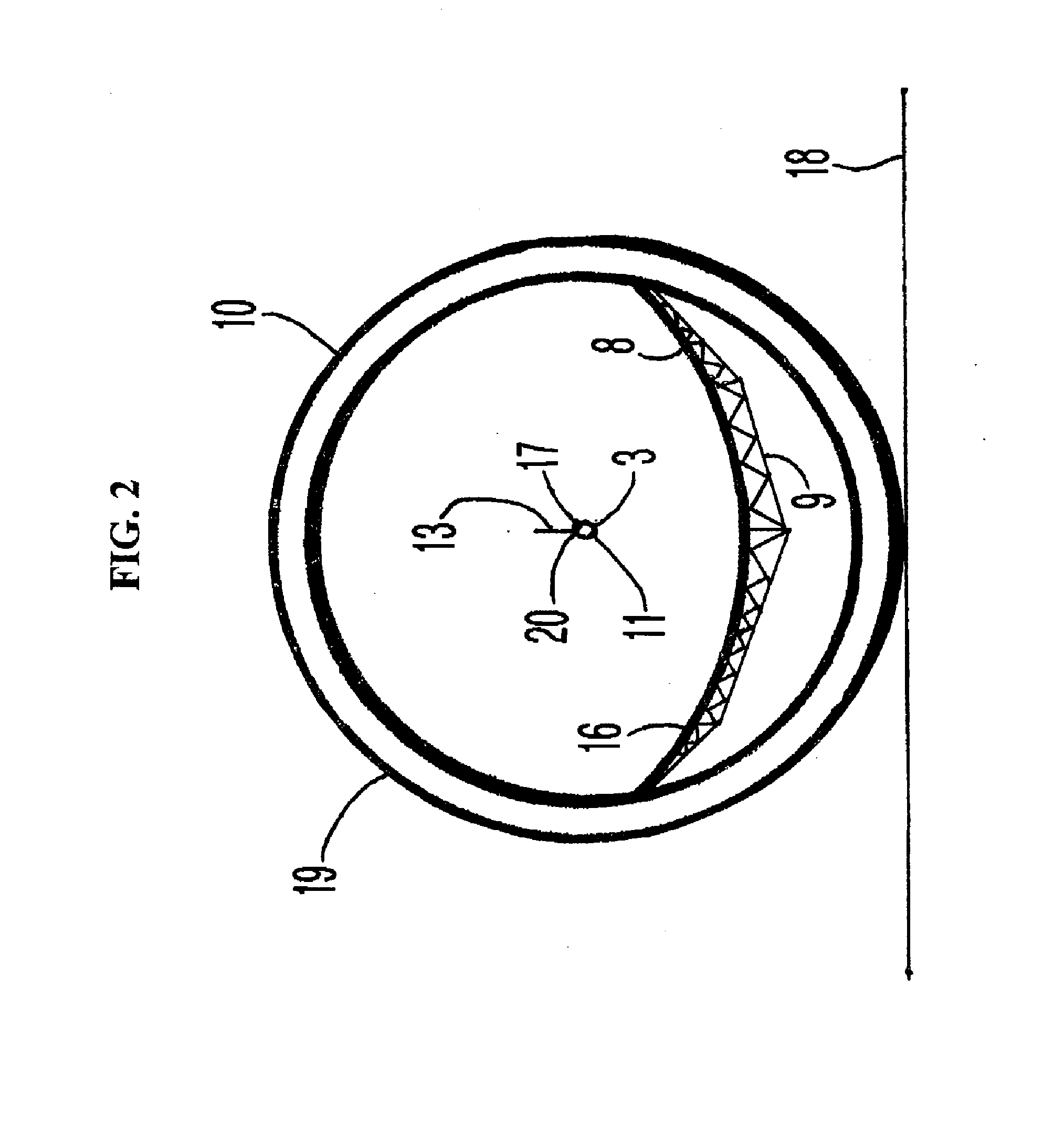Parabolic Trough Solar Reflector With An Independently Supported Collector Tube
a solar reflector and collector tube technology, applied in the direction of solar heat collector controllers, joists, building components, etc., can solve the problems of high cost, high cost, and high cost of electricity generation using existing conventional energy sources such as coal, natural gas and nuclear, and achieve the effect of increasing the operating range and making electricity generation from solar thermal energy more affordabl
- Summary
- Abstract
- Description
- Claims
- Application Information
AI Technical Summary
Benefits of technology
Problems solved by technology
Method used
Image
Examples
Embodiment Construction
[0015]Referring to FIG. 1, a parabolic solar energy collector assembly 1 includes a parabolic reflector 2 which directs solar radiation to an independently supported collector tube 3. The parabolic reflector 2 rotates on support rollers 4 to track the travel of the sun, to optimize energy collection, and is driven by a drive system comprising a drive gear 5, engaged with a drive chain 6 connected to a drive roller 7. The parabolic reflector 2 is in the shape of a trough, and formed from a parabolic reflective surface 8 supported by a parabolic reflective surface support structure 9 supported by at least one circular support beam 10 which rides on the support rollers 4. In the embodiment of FIG. 1, two circular support beams are used though the number will depend on the length of the reflector, weight and other similar factors. Both the parabolic reflector 2 and the independent supported collector tube 3 are aligned along a generally North to South axis. The parabolic reflector 2 has...
PUM
| Property | Measurement | Unit |
|---|---|---|
| pressure | aaaaa | aaaaa |
| diameter | aaaaa | aaaaa |
| temperatures | aaaaa | aaaaa |
Abstract
Description
Claims
Application Information
 Login to View More
Login to View More - R&D
- Intellectual Property
- Life Sciences
- Materials
- Tech Scout
- Unparalleled Data Quality
- Higher Quality Content
- 60% Fewer Hallucinations
Browse by: Latest US Patents, China's latest patents, Technical Efficacy Thesaurus, Application Domain, Technology Topic, Popular Technical Reports.
© 2025 PatSnap. All rights reserved.Legal|Privacy policy|Modern Slavery Act Transparency Statement|Sitemap|About US| Contact US: help@patsnap.com



